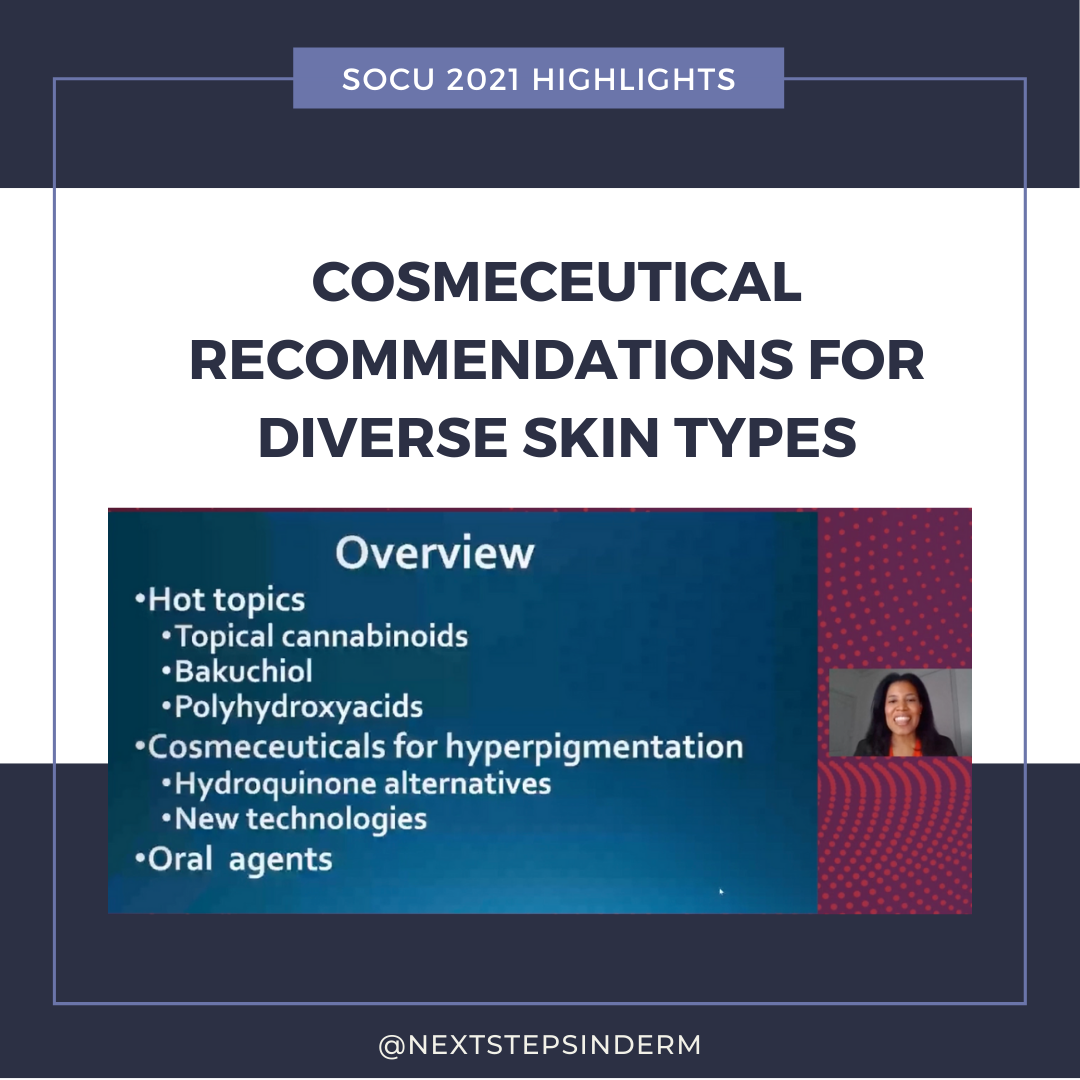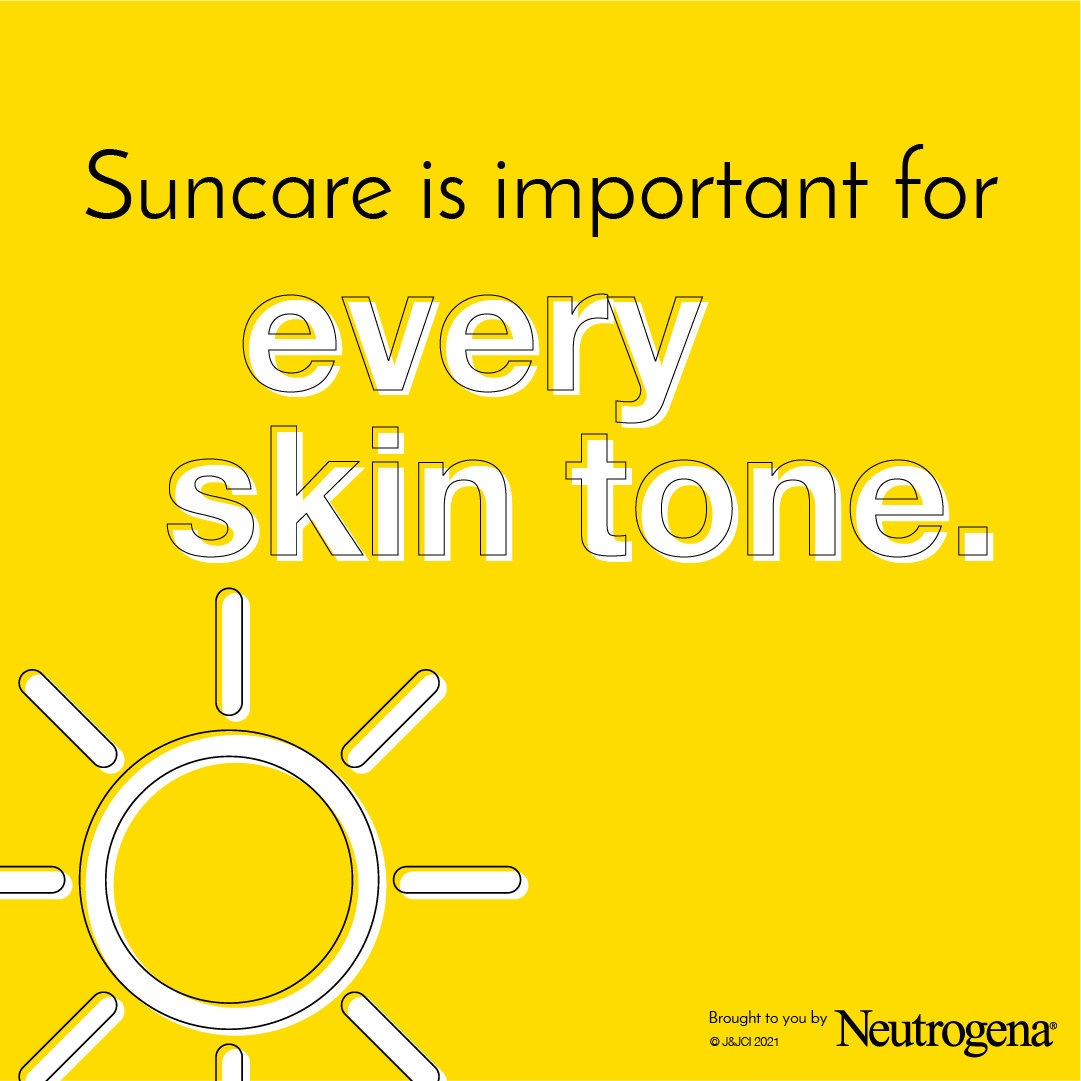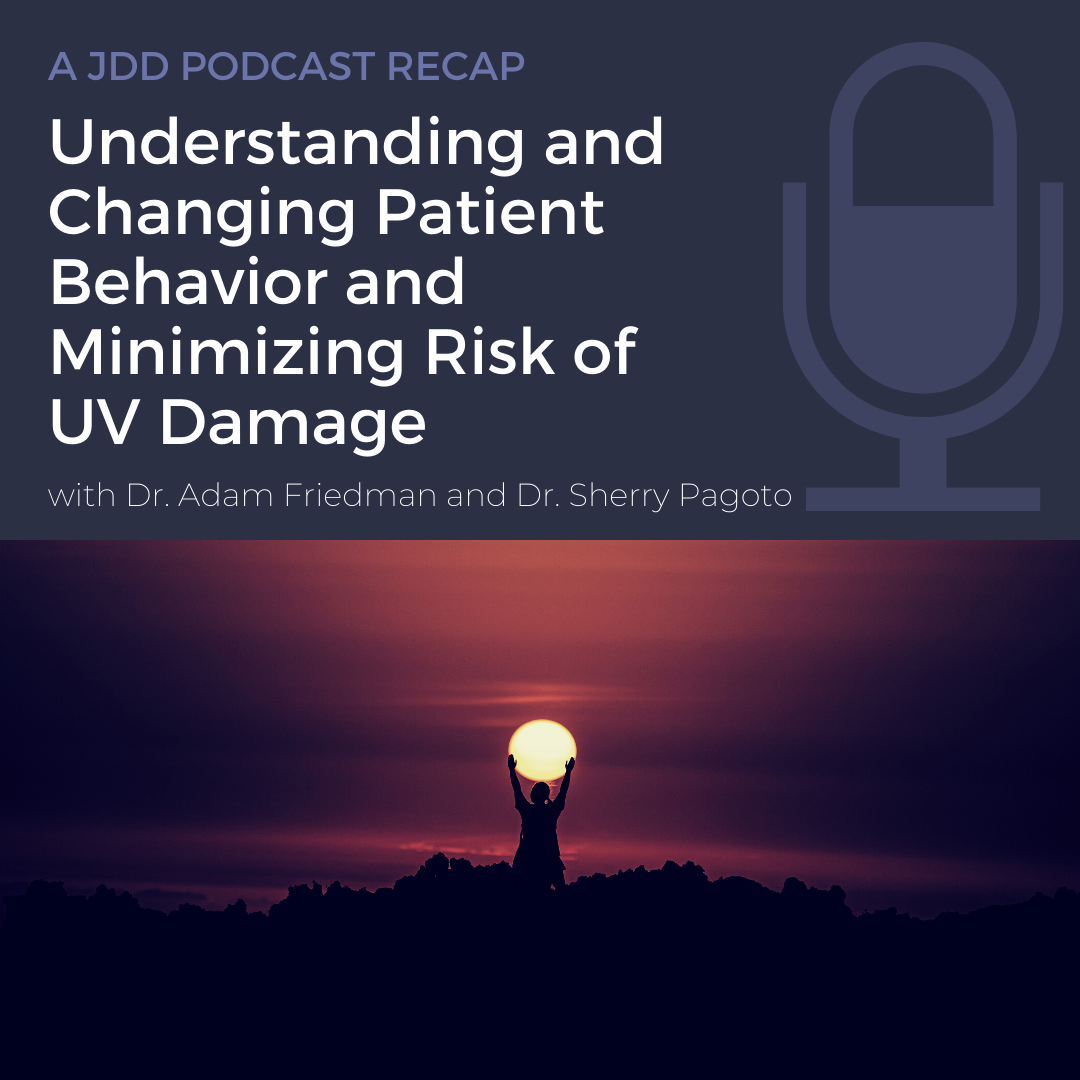Cosmeceutical Recommendations for Diverse Skin Types
 At the 2021 Skin of Color Update, Dr. Heather Woolery-Lloyd, Director of the Skin of Color Division at the University of Miami Department of Dermatology, delivered an excellent talk on cosmeceutical recommendations for patients with diverse skin types, a personal favorite subject of hers. Catch the pearls of her talk here!
Hot Topics in Cosmeceuticals
Topical Cannabinoids – The skin has it …
At the 2021 Skin of Color Update, Dr. Heather Woolery-Lloyd, Director of the Skin of Color Division at the University of Miami Department of Dermatology, delivered an excellent talk on cosmeceutical recommendations for patients with diverse skin types, a personal favorite subject of hers. Catch the pearls of her talk here!
Hot Topics in Cosmeceuticals
Topical Cannabinoids – The skin has it …
 At the 2021 Skin of Color Update, Dr. Heather Woolery-Lloyd, Director of the Skin of Color Division at the University of Miami Department of Dermatology, delivered an excellent talk on cosmeceutical recommendations for patients with diverse skin types, a personal favorite subject of hers. Catch the pearls of her talk here!
Hot Topics in Cosmeceuticals
Topical Cannabinoids – The skin has it …
At the 2021 Skin of Color Update, Dr. Heather Woolery-Lloyd, Director of the Skin of Color Division at the University of Miami Department of Dermatology, delivered an excellent talk on cosmeceutical recommendations for patients with diverse skin types, a personal favorite subject of hers. Catch the pearls of her talk here!
Hot Topics in Cosmeceuticals
Topical Cannabinoids – The skin has it … Continue reading "Cosmeceutical Recommendations for Diverse Skin Types"


 Suncare is important for every skin tone.
The risk of sunburn and skin cancer correlate with skin type – not ethnicity.1
Ethnicity does not confer skin type.
Our population is changing rapidly, and within the next few decades minority populations will become the majority.1,2
African Americans, Asians, Hispanics, Middle Easterners, Asian Pacific Islanders, Native Americans, or individuals …
Suncare is important for every skin tone.
The risk of sunburn and skin cancer correlate with skin type – not ethnicity.1
Ethnicity does not confer skin type.
Our population is changing rapidly, and within the next few decades minority populations will become the majority.1,2
African Americans, Asians, Hispanics, Middle Easterners, Asian Pacific Islanders, Native Americans, or individuals …  Tanning beds are NOT safer than the sun.1
More than 419,000 cases of skin cancer in the U.S. each year are linked to indoor tanning.2
Melanoma is the second most common cancer in females age 15-29.3
Tanning = DNA injury to your skin4
Skin exposed to UV radiation increases production of melanin to protect the skin from further damage. The increased melanin causing the tan color change is a si …
Tanning beds are NOT safer than the sun.1
More than 419,000 cases of skin cancer in the U.S. each year are linked to indoor tanning.2
Melanoma is the second most common cancer in females age 15-29.3
Tanning = DNA injury to your skin4
Skin exposed to UV radiation increases production of melanin to protect the skin from further damage. The increased melanin causing the tan color change is a si …  Do you know what your Ultraviolet Index is today?
Ultraviolet index (UV index) is a measure of the strength of the sun’s harmful rays at a particular place and time. The higher the number, the greater the chance of sun damage.1
UV Index was developed by Canadian scientists in 1992 and standardized by the UN’s World Health Organization and World Meteorological Organization in 1994. U …
Do you know what your Ultraviolet Index is today?
Ultraviolet index (UV index) is a measure of the strength of the sun’s harmful rays at a particular place and time. The higher the number, the greater the chance of sun damage.1
UV Index was developed by Canadian scientists in 1992 and standardized by the UN’s World Health Organization and World Meteorological Organization in 1994. U …  We all discuss sun protection with our patients. At this point, our recommendations are predictable – “avoidance, protective clothing, SPF 30+, broad-spectrum, water-resistant, and reapplication.” But how can we effectively change patient behavior?
Important note – this discussion has wide arching correlations to all areas of human behavior, medicine, and dermatology that spans more th …
We all discuss sun protection with our patients. At this point, our recommendations are predictable – “avoidance, protective clothing, SPF 30+, broad-spectrum, water-resistant, and reapplication.” But how can we effectively change patient behavior?
Important note – this discussion has wide arching correlations to all areas of human behavior, medicine, and dermatology that spans more th …